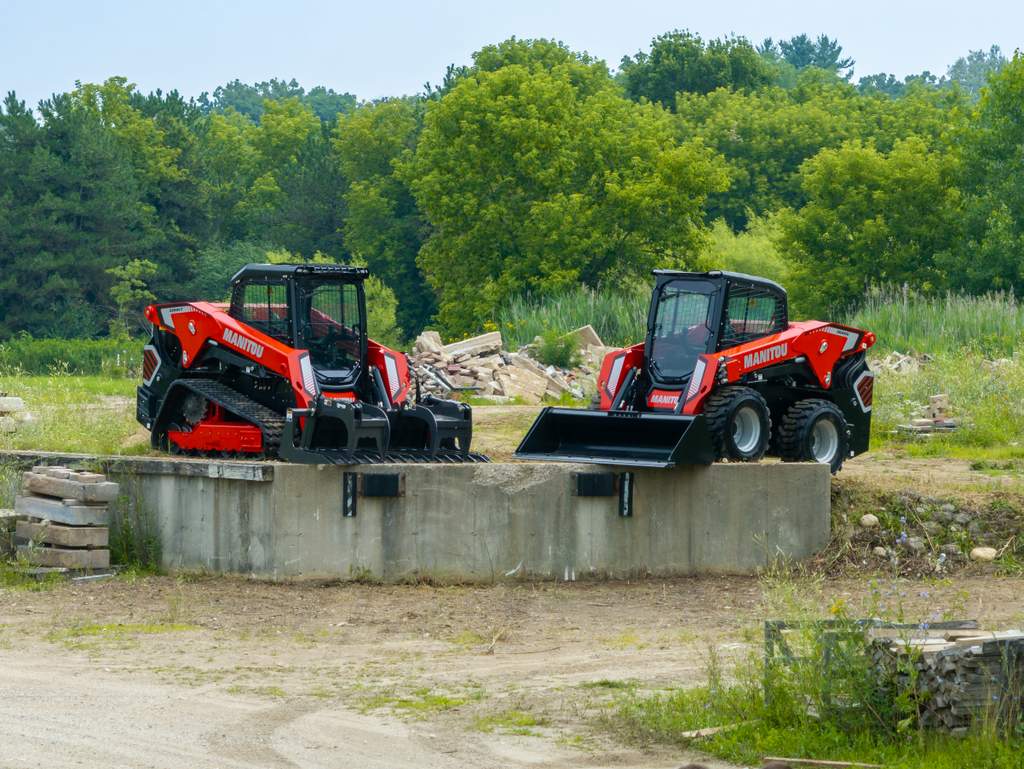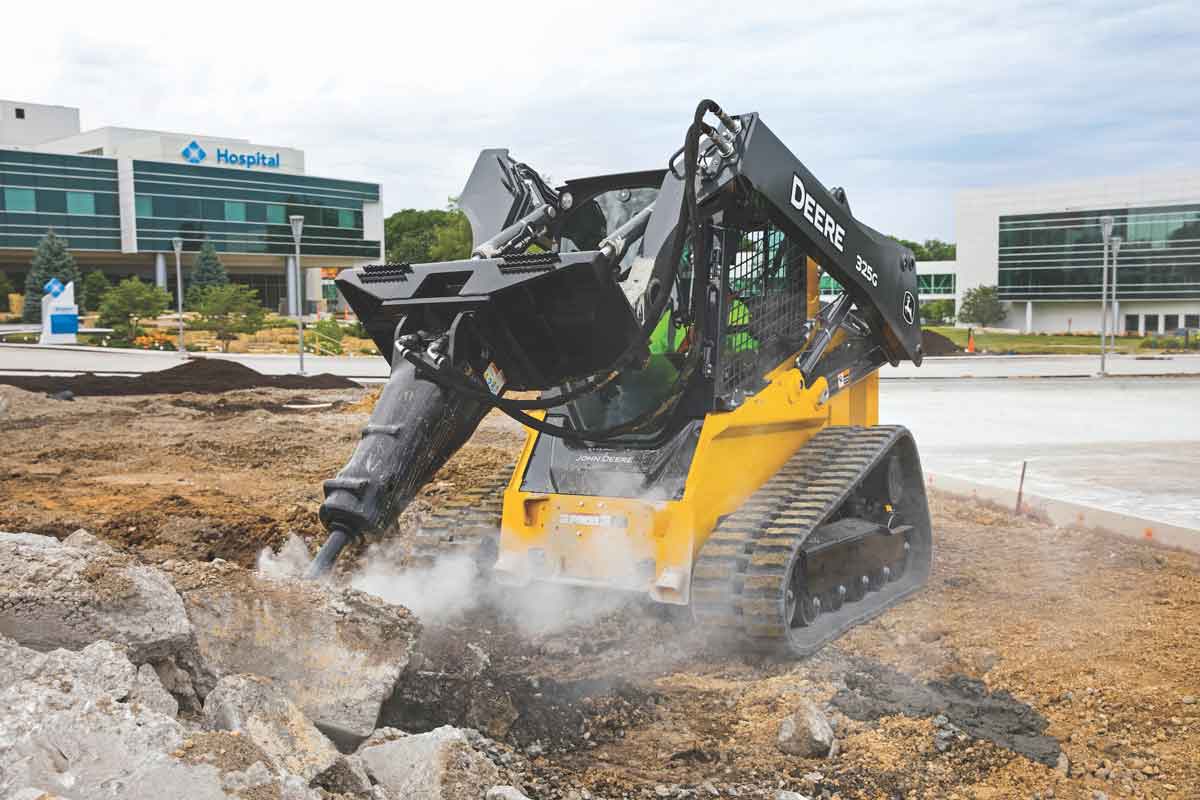Five Steps to Keep Your Skid Steer Loader from Taking a Snow Day

At the first sight of snowfall, kids head to bed dreaming of a weather-related absence from school — a snow day. Many adults do, too. While winter weather often shuts down schools for a day, you’re not looking for excuses or delays. You’re working to stay on schedule. When the project calls for winter work, contractors count on skid steer loaders to keep the operation running. Skid steer loaders are tough enough to make the transition to the cold and snow, and they have the versatility to move from general construction work to snow and ice removal and back with ease. Before you let your skid steer loader out to work in the snow, make sure it’s ready to handle the cold. Follow these seasonal maintenance tips to keep your machine in top shape through the long winter.
1. Change Fluids with the Season
There’s nothing like an insulated mug of hot coffee to get you through a brisk winter’s day. If your skid steer loader could talk, it would tell you the same. When you start switching up the contents of your cup holder, do the same for your machine. Filling up with the proper cold-weather engine oil, coolant, fuel and hydraulic oil minimizes maintenance problems.
- Engine oil — You’ll need an engine oil viscosity that matches the temp outside. A 10W-30 is a common factory fill that performs down to minus 20 degrees Fahrenheit. For better cold-weather starting and lubrication, use a 5W-40 synthetic oil. They typically protect down to 40 below.
- Engine coolant — Antifreeze is just as important for your skid steer loader as it is for your car or truck. Test it and top it off before the weather turns.
- Hydraulic oil — Synthetic blends provide good cold weather performance. Depending on where you live, you may need a high-performance hydraulic lubricant. They’re custom blended to give you peak flow in subzero temps.
- Fuel — Make sure to keep the fuel tank topped off to minimize condensation buildup in the tank and routinely remove water from the fuel filter. Additionally, use only clean, high-quality diesel fuel that is grade number 2-D or 1-D.
Reference the chart below for specific recommendations based on temperature: Your compact equipment manufacturer probably has a recommendation for the oils, fuels and fluids specific to your skid steer loader and cold weather conditions. Double-check your operation and maintenance manual before you switch things up.
2. Fill Up Cold Tires
Remember that experiment from science class where the balloon shrinks from the cold? The same thing happens to your tires. When the temperature drops, so does the air pressure. Cold weather also makes the rubber go stiff. If you notice your tires sagging after a dip in temp, fill them up to capacity. Repair any leaks suffered in the busy season. A small leak or nail in the tire is easy to put off in warmer weather — you may only have to fill your tire once a week. In winter, once a week can turn into once a day. You’ll eliminate a lot of wasted time and ensure that low tire pressure doesn’t sap your pushing and lifting power throughout the day.
3. Charge the Battery
It takes a little longer to get going in the mornings when it’s cold — for both you and your loader. You layer up and crank the heat to power through, only to find your skid-steer loader can’t even power on. Freezing temps force your battery to crank twice as hard to turn over, deliver fuel to the engine and start up. Before the first snow hits, run a load test and check wires and connections for wear or corrosion. Even a small defect can result in a loss of cranking amps, leaving you with a dead battery and a frozen project.
4. Check the Cab Comfort Features
Your mom never let you go out into the cold without a stocking cap on your head. Smart woman. Freezing temps are no time to test your toughness. Don’t let your skid steer loader leave the garage without checking everything that keeps the cab warm. Inspect the door and window seals to make sure heat won’t escape. Test that the heating, defogging and defrosting systems are all working. If any of those things go out on the job, it will make for a long, uncomfortable day for you or another operator.
5. Prep Commonly Used Attachments
You dreaded shoveling as a kid. Digging out of a snowstorm meant hours of back-breaking labor — and less fun in the snow. If only you had a skid steer loader back then. With the right attachment, a loader transforms into a snow removal machine.
Attachments deserve the same attention as the loader itself. Inspect the hoses, cylinders and guards, cutting blades and edges for signs of wear or damage. If the attachment requires hydraulic fluid or lubrication, check the levels before you head out into the cold. This is especially important for snow removal attachments that have been collecting dust in your garage since spring.
If you can’t justify the investment in owning seasonal attachments, it’s time to reconsider. Another option is renting a seasonal attachment from your local compact equipment dealer. A low-cost attachment does more than lighten the load of manual labor. It takes the place of a dedicated snow-clearing machine or contracting out the work, saving you thousands of dollars. Invest in a variety of snow attachments to clear away snow and ice to get your construction site ready for work. The most popular attachments include:
- Angle brooms — Push snowfalls of 6 in.
- Buckets — Handle large volumes with a high back for pushing and straight sides cutting through snow piles.
- Blades — Remove light to moderate amounts of snow cleanly with a sharp cutting edge. V-shaped blades plow deep drifts and push large piles in bigger areas like parking lots, driveways and roads.
- Pushers — Clear snow from uneven surfaces without damaging the hardscape or a sloped sidewalk.
- Snow blowers — Throw and blow snow wherever the job demands with a directional, rotating chute. Some models have a truck-loading chute for moving snow offsite.
- Spreaders — Apply salt and sand to give compact equipment the traction to work in winter and for people to walk safely.
- Scrapers — Break up hard-packed snow and ice from the pavement.
Construction projects don’t shut down for three months just because it’s a little chilly. Sure, the weather plays a bigger role, but many jobs move along as if winter never came. When your timelines run into winter, pencil in the time to ready your skid steer loader for the season. It only takes a handful of preventive steps and a stock of the right snow removal attachments to work through winter.






